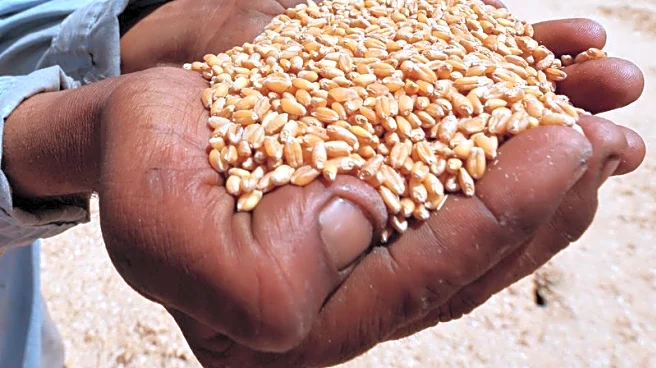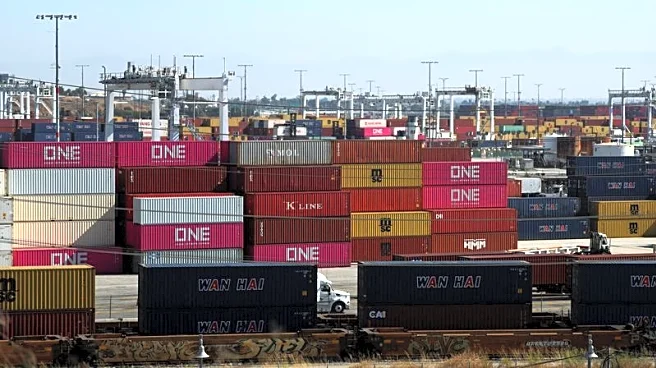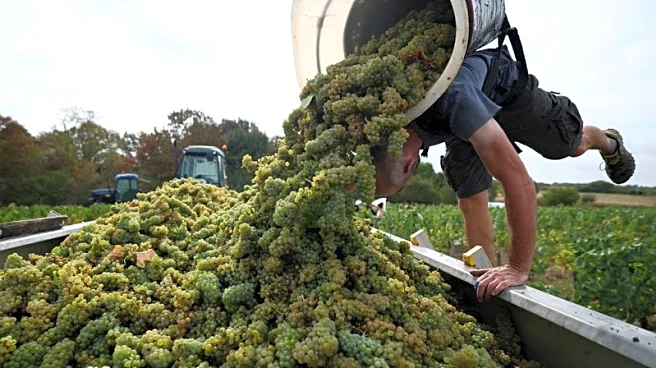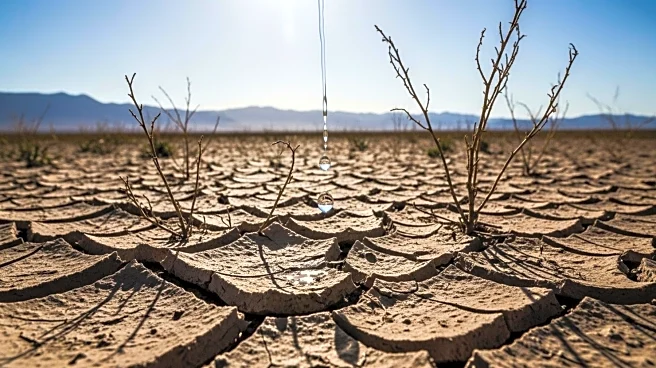What is the story about?
What's Happening?
Niti Aayog, India's government think-tank, has developed a strategic plan to achieve self-sufficiency in pulses by 2030 and aims to double production by 2047. The report projects an increase in output from 26.06 million tonnes in 2022 to 34.45 million tonnes by 2030, and further to 51.57 million tonnes by 2047. The strategy includes crop-wise clustering, adoption of region-specific technologies, and high-quality seed distribution. The plan also emphasizes climate adaptation and data-led monitoring to ensure sustainability. Agriculture Secretary Devesh Chaturvedi highlighted the challenges in increasing pulses production, noting the importance of breakthroughs in high-yield varieties and improved seed replacement rates.
Why It's Important?
The initiative by Niti Aayog is crucial for India's agricultural sector, as pulses are a staple in the Indian diet with limited elasticity and replaceability. Achieving self-sufficiency in pulses can reduce dependency on imports, stabilize prices, and enhance food security. The focus on climate adaptation and technological innovations could lead to sustainable agricultural practices, benefiting farmers and consumers alike. The projected surplus by 2047 indicates potential for export opportunities, which could positively impact India's economy and global trade relations.
What's Next?
The next steps involve implementing the recommended interventions, such as region-specific technologies and seed distribution strategies. Stakeholders, including government agencies, farmers, and research institutions, are expected to collaborate to address challenges in pulses production. Monitoring and evaluation mechanisms will be crucial to track progress and make necessary adjustments. The success of this plan could serve as a model for other agricultural sectors facing similar challenges.
Beyond the Headlines
The focus on pulses production highlights broader issues in agricultural sustainability and food security. The emphasis on climate adaptation reflects growing concerns about environmental impacts on agriculture. Additionally, the initiative underscores the importance of research and innovation in overcoming production challenges, which could lead to long-term shifts in agricultural practices and policies.
AI Generated Content
Do you find this article useful?















